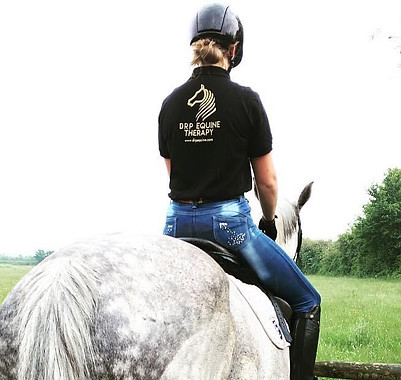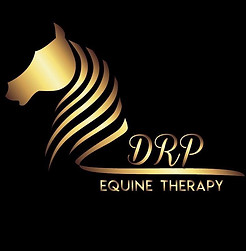
Equine Transeva Technique
The Equine Transeva Technique is the complete technique for the assessment and treatment for musculoskeletal injuries, by re-establishing correct muscle movement and function.
The Winks Greene Transeva uses a unique electrical current which creates rhythmical muscular contractions that can identify muscle dysfunction.
The contraction will resemble how the muscle will operate during voluntary contraction, as a result any area with inefficient movement is revealed.
Assessment will allow technicians to gain a comprehensive understanding of the current state of an equine patient.
By assessing the elasticity, contractility and irritability of the muscle the practitioner can pinpoint the exact area of weakness, inefficiency or trauma.
The Transeva creates an optimum environment for muscles to build by releasing tension and toxicity from a certain muscle group.
Customer Testimonials

The Practitioner
The practitioner has complete control over a freely movable hand held electrode, while the other hand is used to control the frequency and intensity of the pulse, remaining in complete control of the strength of contractions at all times.
The unique and wide-ranging pulse allows for deep penetration without causing discomfort, allowing both superficial and deep muscles to be stimulated.
The Equine Transeva Technique can be used for musculoskeletal injuries in the horse, which can also be used for perfecting the equine athlete and assist the maintenance of the athlete. Horses training at high levels will put strain on certain muscle groups it is important to maintain the horse’s muscular group’s to prevent injury.
With each pulse the ETT practitioner must assess how the muscle is responding beneath their hand and must adapt their pulse and position of the hand piece to fully correct muscle function, throughout the entire body.
Functions of Transeva
Identify muscle dysfunction
Improve muscular movement
Relieves muscle discomfort
Improves muscle efficiency
Creates good circulation
Increase healing in damaged tissues
Stimulates venous and lymphatic return to prevent injury and inflammation
Effects of Transeva
Improves muscle tone function and efficiency
Increases blood circulation to muscles which increases healing
Cleans away waste products
Increase fluid absorption
Increase oxygen and nourishment to area
Benefits of Transeva
-
Improve muscle strain
-
Muscle bruising
-
Muscle atrophy
-
Enhances performance
-
Myofascial Release

Cases Suitable for Treatment
-
Muscle wastage
-
Decline in performance
-
Haematomas
-
Reluctant to being saddled or shod
-
Behavioural changes
-
Cold backed
-
Stiff to a certain rein
-
Freezing Rearing/ Bucking
-
Stride shortens when girthed
-
Tension in front or hindquarter
-
TMJ - reluctance to accept contact - fussing with the bit
Can assist with:
-
Tendon injuries
-
Fractures
-
Acute or chronic joint / ligament sprains

About Me

From a young age I have always been around horses. I had my first pony Molly at the age of 7, throughout the years I have been competing regularly in Eventing and Show Jumping. At the age of 12 I attended Stonar School which I took my pony Elvis to, I was a member of the elite academy where I had lessons with Fiona Hobby and Darrel Scaife.
Following on from there I went to Hartpury College which I studied level 3 Extended Horse Management Equitation. Having two years there with my horse Dilly we got accepted onto the Academy Team which gave us top coaching in Show Jumping from Lizzel Winter and Corrine Bracken. I competed regularly in British Showjumping including the Hartpury Spectacular and Blue Chip. Whilst Hartpury we studied many subjects including rehab therapy, from there I knew that I wanted to pursue a career in Equine Therapy.
I have always been dedicated to horses from a young age including their health and wellbeing, working with them correctly and producing my own horses. I noticed that with show jumping it puts more strain on the horse’s joints if the muscles are not working correctly, whenever a therapist came to do my horses I was always very interested in what they were working on and how I could change my riding/movement of the horse would prevent the horse from the same injury again.
I started BS (British Show jumping) when I was 13 and have been going through the levels from 80cm to 1.25cm. At the age of 14 I won the Pony Club National Eventing Championships on my pony Elvis, all going up the levels in pony club competing in the Elite class at the championships.
I first heard about the BSET Academy in South Africa from my saddle fitter, when I researched more into the course it looked like something different and unique. In august 2016 I moved to South Africa for a year. During the course we got to work with our horses both with the treatment and rehab riding, we were given certain project horses that we could ride and treat to improve their injuries and performance.
After spending a year in South Africa we concentrated a lot on the race horses and polo ponies, with my love to travel I've been able to treat horses in South Africa, New Zealand and England.
History of the Transeva

Sir Charles Strong qualified as a physiotherapist in 1930 in England, the Faradic current started in the 1800’s. In 1939 Lord Mountbatten stated ‘‘As humans respond so rapidly to this form of treatment for their injuries, why isn’t it used on horses for theirs?’’ Soon after his treatments to the injured polo ponies there was astonishing results in their recovery. After many years of improving the machine to improve the current Strong developed the “Strong Box” in 1950’s.
Winks Greene, Strong’s apprentice was with him when he developed the original method, treating and pinpointing musculoskeletal injuries. In 1984 Winks Greene started the Natal Equine Physiotherapy Centre in Nottingham Road South Africa. Winks had two major characteristics which were dedication and determination. One of Greene’s most remembered horses was “Gondolier”. This was one of SA top race horses who recently has an injury to the Near Hind quarter when training, as no one could pinpoint the area, Winks worked on him and two and a half months later he went on to win the 1985 Rothmans Durban July handicap race.
When Sir Charles Strong passed away he had developed the new machine “Winks Greene Transeva”. Winks treated thousands of horses, the equine owners said that the Transeva was “Spectacular” Winks was soon to work on injured Rugby Players in the 1990’s of which many others were to receive her treatment. Winks started treating patients who had suffered from Cardiovascular and Orthopaedic Trauma. Winks was also part of the team that worked on the paralysed patients.
Beth Shaw an established rider from the USA met Winks in 1995 which she became her apprentice at Natal rehabilitation Centre. Beth and had success over several years with South Africa’s main horse race Durban July. Which the horses she has been treating have won or come in the top three. BSET Academy, is located in South Africa which was established in 2008 by Beth Shaw. Today the academy has over 30 graduates that are now treating horses all over the world.
DRP Equine Transeva Technique Services

Initial Assessment Procedure
The Equine Transeva Technique Assessment will allow technicians to gain a comprehensive understanding of the current state of an equine patient. The practitioner has complete control over a freely movable hand held electrode, while the other hand is used to control the frequency and intensity of the pulse, remaining in complete control of the strength of contractions at all times. The unique and wide-ranging pulse allows for deep penetration without causing discomfort, allowing both superficial and deep muscles to be stimulated. By assessing the elasticity, contractility and irritability of the muscle the practitioner can pinpoint the exact area of weakness, inefficiency or trauma.

Treatment Plan
Once the specific needs of your horse have been identified from the assessment process a treatment plan can be devised to offer the most effective treatment option for you. I believe that it is important for the therapist and owner to have a clear vision of what the required result may be, whether working to an event timetable or simply to correct identified issues our treatment plans are bespoke to the needs of our service user. Regular assessments are part of all treatments.

Supplementary Services
At this time I am also progressing my British Horse Society accreditation to stage 4 (senior coach) in order to further develop my skills equine care & management as well as riding and teaching skills. I want to work towards combining my treatments with lessons to focus on the rehabilitation of the horse and rider. I am also available for freelance riding and riding lessons for ages 6+ in basic riding, flatwork and showjumping. Experienced with breaking in youngsters and bringing on young horses.

What to Expect
Fully qualified and insured. As a Equine Therapist I work under The Veterinary Surgeons Act (1966). This states that veterinary consent must be obtained prior to treating any animal. A phone call to your vet is usually sufficient, followed by a consent form which is sent through prior to treatment.




